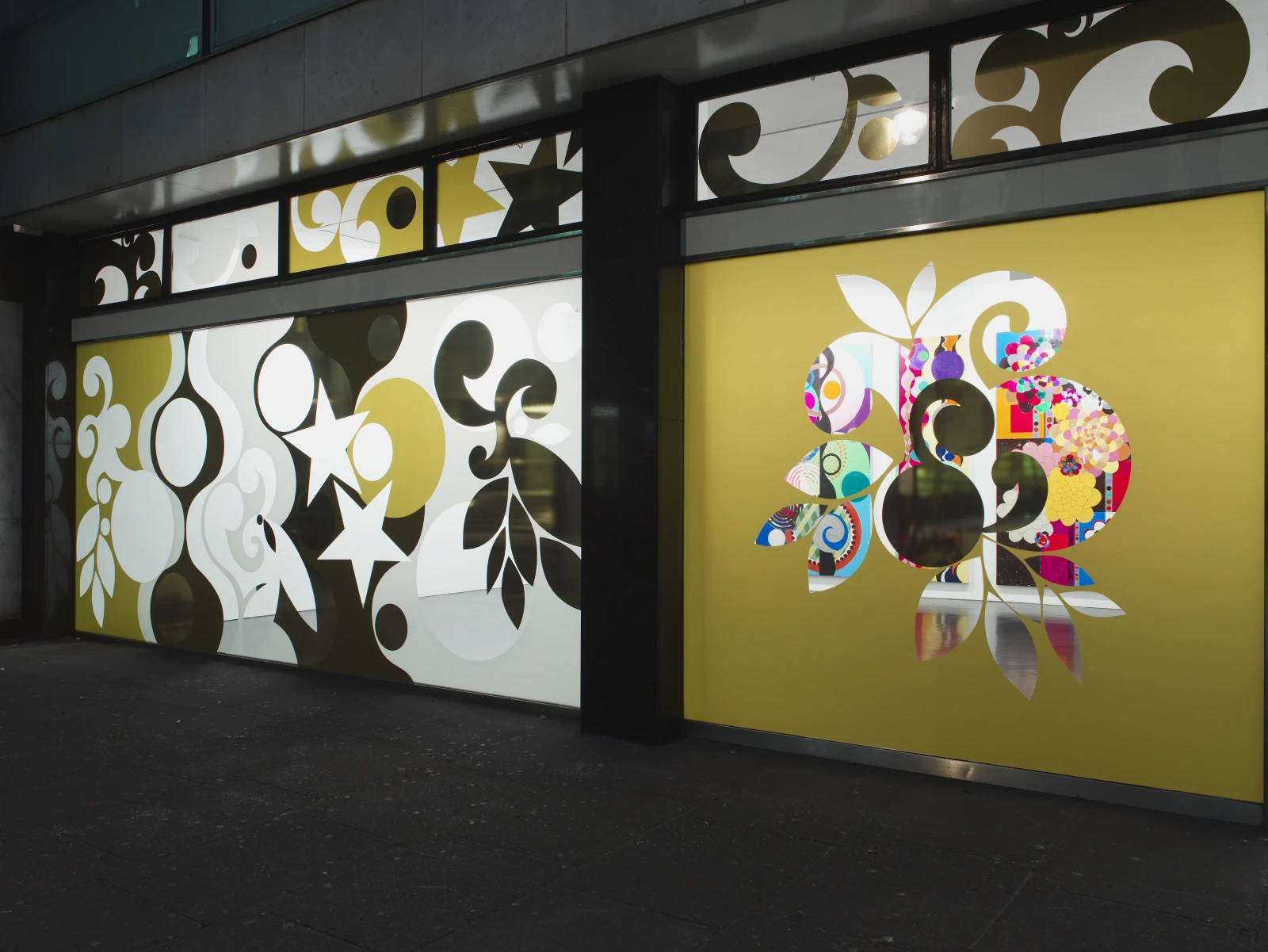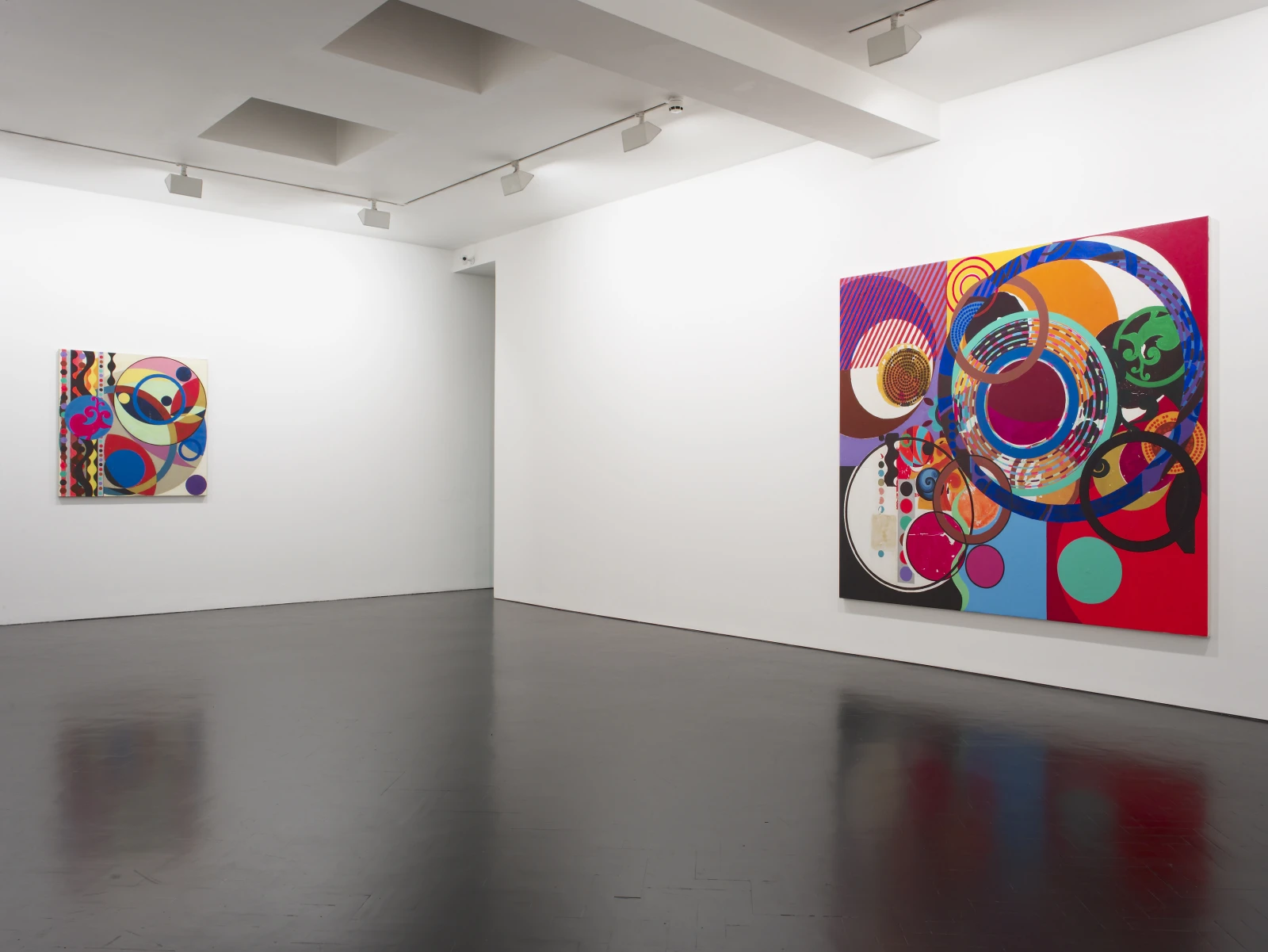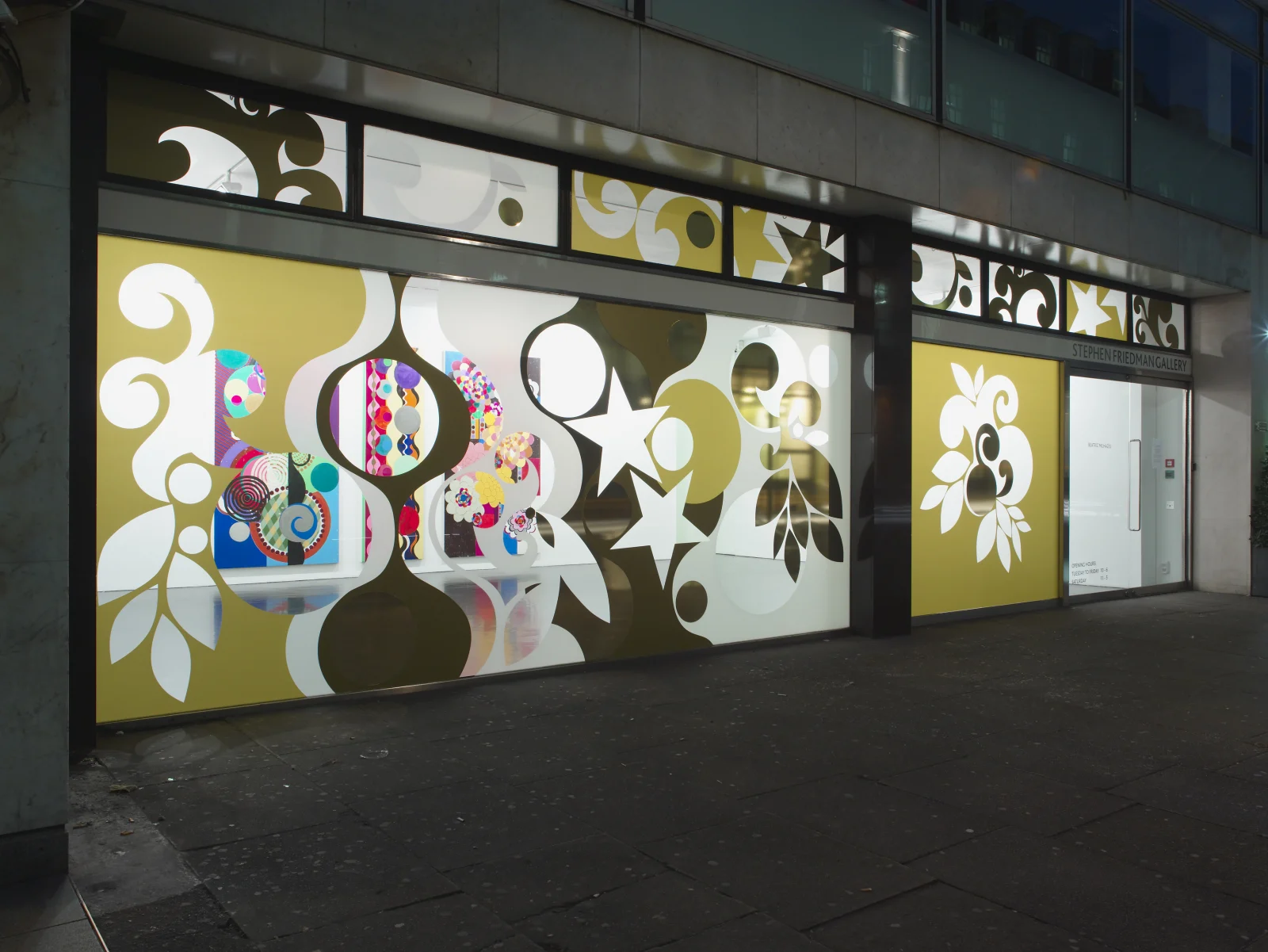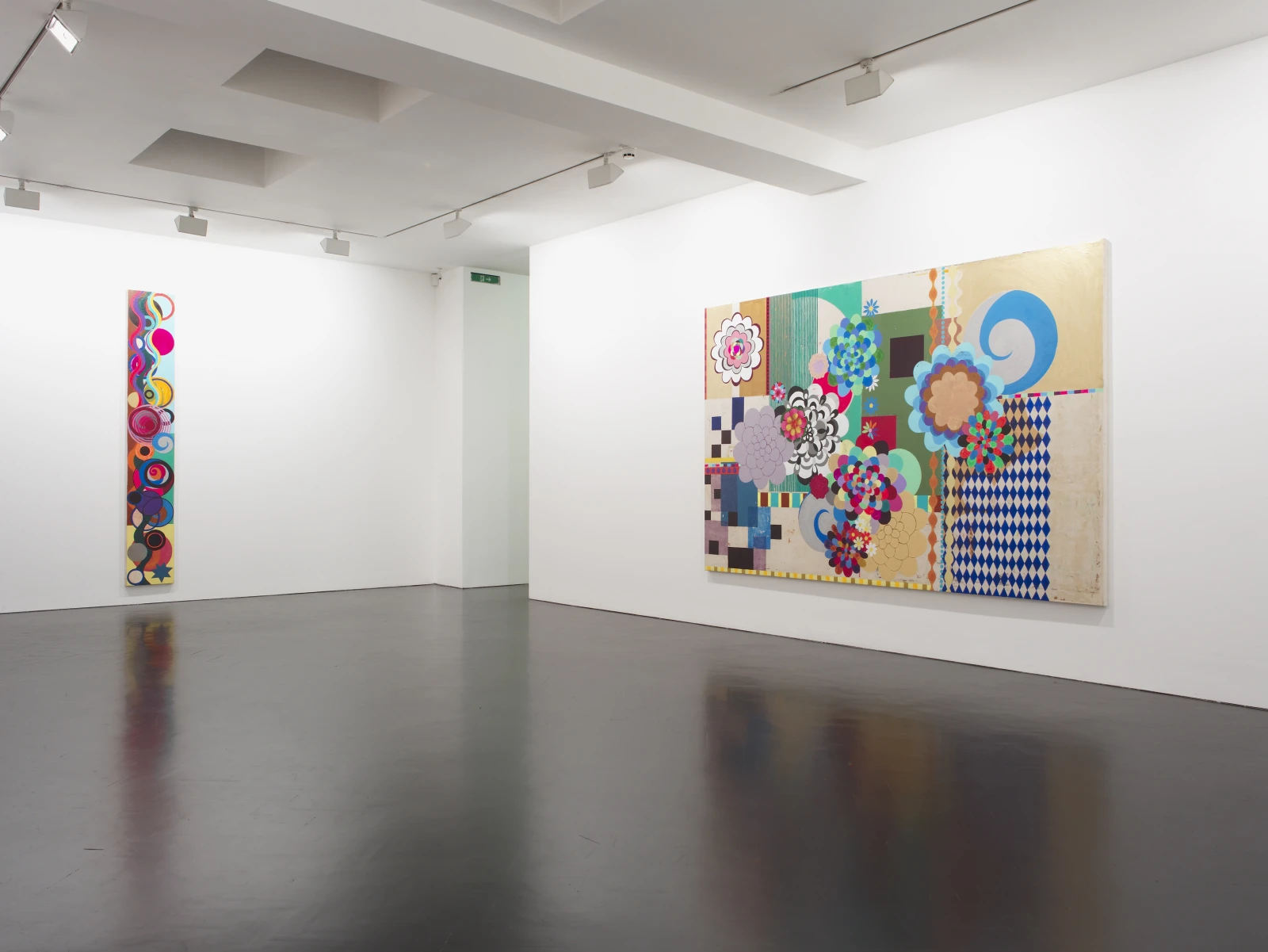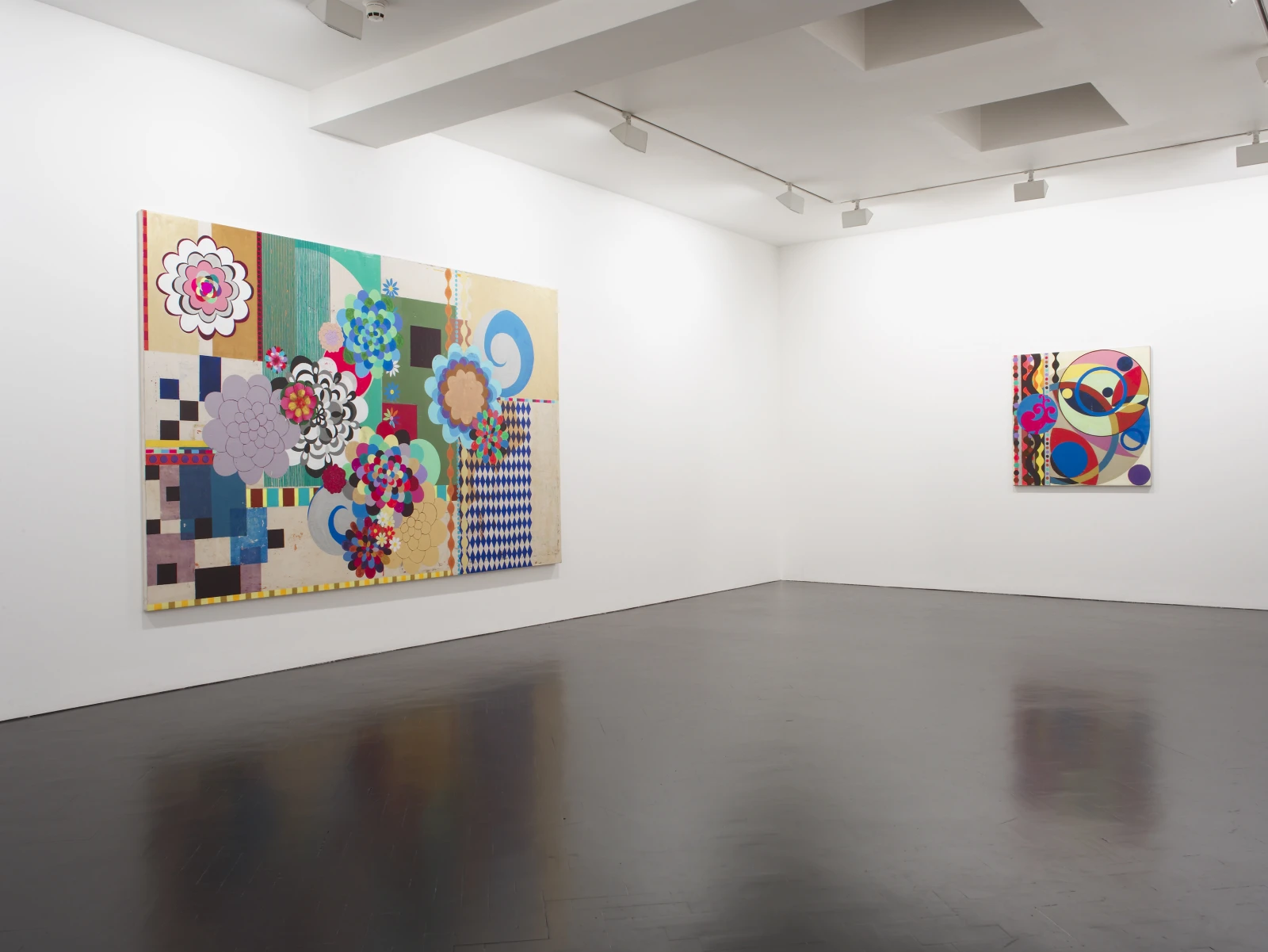
Beatriz Milhazes
Overview
This new body of work illustrates Milhazes’s command over her compelling and unique aesthetic. Confidently evolved, each painting stands alone as testament to both the artist’s painterly skill and her ability to celebrate colour and form to equal degrees.
Stephen Friedman Gallery is delighted to announce an exhibition of new paintings by Brazilian artist Beatriz Milhazes. This is the artist’s fourth solo exhibition at the gallery and anticipates her forthcoming one-person show at the Beyeler Foundation in Basel, in 2011.
Born in Rio de Janeiro in 1961, Milhazes came of age as an artist during a transitional moment in Brazilian art following the collapse of the military dictatorship. The ‘Geração Oitenta’ (the Eighties Generation) in Brazil proclaimed a return to painting, vivid imagery and lush colour. Milhazes absorbed herself in this new tradition, drawing from the rich, tropical landscape of her native surroundings to produce vibrantly coloured paintings, collages and prints.
Stephen Friedman Gallery is delighted to announce an exhibition of new paintings by Brazilian artist Beatriz Milhazes. This is the artist’s fourth solo exhibition at the gallery and anticipates her forthcoming one-person show at the Beyeler Foundation in Basel, in 2011.
Born in Rio de Janeiro in 1961, Milhazes came of age as an artist during a transitional moment in Brazilian art following the collapse of the military dictatorship. The ‘Geração Oitenta’ (the Eighties Generation) in Brazil proclaimed a return to painting, vivid imagery and lush colour. Milhazes absorbed herself in this new tradition, drawing from the rich, tropical landscape of her native surroundings to produce vibrantly coloured paintings, collages and prints.
The artist’s formal references were not wholly introspect, however, with early twentieth century European modernism playing an equally significant role. The artist cites three artists as the ‘centre of her interest’: Matisse, Mondrian and Tarsila do Amaral. This unification of Western and Latin American influences inspired an entirely unique formal exploration, which cements Milhazes’s position as one of the leading South American artists working today.
For this exhibition Milhazes presents five new paintings and a site-specific window mural. In the front gallery space a large triptych hangs across the gallery wall, marking a return to a format not seen in the artist’s work since the late eighties and early nineties. Facing this, a drawing in vinyl covers the gallery’s entire glass façade in a floor to ceiling mural of eye catching geometric abstraction. In the back gallery space four further paintings evidence an evolution in form that has been in development over the past two years.
Undulating waves run up and down the canvas, slicing through or weaving behind solid circles of colour, interconnected rings and the artist’s archetypal rosette and arabesque leitmotifs. Checkered diamond patterns and diagonally placed adjacent lines form the rhythmic, yet ‘dizzying,’ moments of displacement so important here. Enhancing the op-art effect that has before teetered on the threshold, these delineations insist that the eye must roam continuously across the exuberant canvas. Thewindow mural enhances this effect, creating an absorbing, reverential environment in which to further appreciate the awe-inspiring triptych that dominates the front gallery.
Readily defined geometric shapes, grid-like compositions and Milhazes’s use of neon denote a stronger graphic play than previously seen. The overall effect recalls the work of the Russian constructivists, whose adherence to the formal structures of geometric abstraction led them to push the two- dimensional plane of the canvas to its very limits. Illusory representation was for the most part disregarded. In its place colour and ‘line’ were privileged to produce work that attempted to look afresh at art itself.
Faktura - the physicality of the painting’s surface - was integral to this movement and is a concern that can be seen echoed in Milhazes’s own practice. Followers of her work will by now recognise the layered surfaces, a result of her unique working process. Each motif is painted first on to a translucent plastic sheet, built up with layer upon layer of acrylic paint. When dry, the motif is peeled off the plastic sheet and fixed to the canvas. Her methods of layering, transferring and overlapping turn surface into a shifting terrain, both energetic and material. The work of artists such as Fernand Léger, Liubov Popova and Paul Klee is brought to mind here.
This new body of work illustrates Milhazes’s command over her compelling and unique aesthetic. Confidently evolved, each painting stands alone as testament to both the artist’s painterly skill and her ability to celebrate colour and form to equal degrees.
This new body of work illustrates Milhazes’s command over her compelling and unique aesthetic. Confidently evolved, each painting stands alone as testament to both the artist’s painterly skill and her ability to celebrate colour and form to equal degrees.
Installation Views
